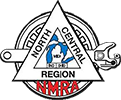Our facilities allow for us to have 8 clinics presented simultaneously throughout the entire convention. Clinics will be offered from the first day of the convention to the final day. On Monday the clinics will start at 1:00PM and run until 8:30PM, all other days, they will run 9:00AM to 8:30PM. Over the course of the convention there will be more than 200 clinic slots. Clinics are one hour in length including time for questions and answers. Most clinics will be repeated so that attendees will have at least two opportunities to catch a particular clinic.
The FULL LIST of clinics is now available! Click the buttons below to view the complete Station No.VI agenda, including clinics, and use the itinerary feature which is available on the mobile site.



